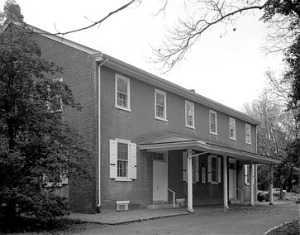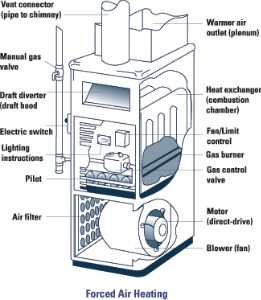Related Topics
City of Homes
At first, there were limitless forests, but then the city burned down. After that, the "Red" city has long been built of brick. Philadelphia's masonry future is unknown, but it won't be wood.
Home Heating Issues

|
| Haddonfield Friends Meeting House |
Like all churches, the Haddonfield Meetinghouse has a big heat bill expense, and only needs to keep the place warm a couple of times a week. So more attention than usual is paid to this expense, which is a considerable one if viewed as dollars per hour used. Inevitably, a large body of members will contain a few who are in the heating business or close enough to it to have a strong opinion. And then, there is the environmental movement.
In my house, I burn about 1200 gallons of oil a year; my auto use is more moderate, I burn less than 500 gallons a year of gasoline. Everyone will have a unique set of figures. For me, the house is a bigger polluter of the atmosphere than the car. Even if others are big auto users, the heating of houses remains a major environmental issue, with much less public agitation about it than about cars. Remember, most people require heat at two places in the winter, where they live, and where they work. Half of this relates to the heating of churches, too, which is where the discussion begins but first wanders a little. But someone also has to heat your drugstore, your supermarket, and your schools.
In the first oil crisis, when Jimmy Carter was President, one of the Haddonfield members arranged some sort of switch arrangement allowing the Meeting to convert from oil to gas and back, as the price levels fluctuated. As I recall, he reported the Meeting saved $5000 in the first year. Just how this was done I never learned; that particular oil shortage was over before I got around to looking into it for my own home. But now disturbances in the Middle East have made imported oil more uncertain, and refineries were built in the Middle East with the oil profits, so our own refineries along the Delaware River are closing down, making petroleum products more uncertain for us. Meanwhile, it has been discovered the state of Pennsylvania is sitting on top of as much shale gas as Arabia has oil underneath it, and new ways have been developed to extract the gas. So, the long-term view is that fuel oil will get more uncertain, while gas is at least likely to be more available. In both cases, the effective price to the consumer will be at the mercy of politicians in state government, scientists who seriously study the question of global warming, and unstable personalities who periodically tell us the sky is falling. Therefore, the long term prospect is that gas heating will probably be cheaper and more dependable than oil, but the almost certain prospect is that this ratio will jiggle up and down depending on politicians and bouts of public hysteria. The average homeowner only lives in the average house for seven years, but a furnace will be replaced once in forty or fifty years. Add all of this up, and the following conclusions are reached:
1. It's probably better if new houses install gas furnaces, and old oil furnaces should probably be replaced by gas as they wear out. Better for the environment, and cheaper in the long run. Unless you have a better plan, which we will here propose.
2. Most homeowners have less than a seven-year horizon for living where they are, so they ignore the long term and depend on their luck about the sudden discovery that the furnace isn't working tonight, by playing the odds, rather than thinking about it in advance. This leads to short-term concentration on the emergency installation cost differential rather than the long-term costs which are really considerably greater. The heating crisis generally happens to people who never gave the matter a moment's thought until the house suddenly got very cold, and who therefore cannot cope with the claims and potentially self-serving arguments of the emergency repairman.
3. The old furnace doesn't work, so it gets removed and replaced. The argument put forward here is you should look into the matter during warm weather, request bids, educate yourself about the topic, particularly if your present furnace is more than thirty years old. And then, don't remove the old one, just add a new one right next to it in the basement.
4. Furthermore, don't worry about switches or commercial dual-fuel furnaces designed to heat a high school. Just get a high-efficiency furnace of the opposite fuel requirement from what you have, and control both of them with separate thermostats. You "switch" between them by setting one thermostat for a higher temperature than the other; in my case, 58 degrees for oil, 68 degrees for gas. If you have been to Florida and the house is really cold, both furnaces will work, and the house will warm up in an hour.
5. That's the essence of it, but there are a few other things you had a better look into.
* * *

|
| Forced Air Heat |
Let's resume by noticing that most people have a separate hot-water heater in the basement, right next to the furnace, using the same chimney; but the water heater already burns gas. If that's the case, there is no problem with availability and plumbing for gas. However, if a gas heater and an oil burning furnace sit side by side, the oil burner is helping the water heater. That's because oil is less efficient (68% in 1950, 85% in 2010), while gas is more efficient (95% in 2010). As a consequence, the exhaust from an oil burner is hotter than the exhaust from gas and creates more of an updraft in the chimney. With the removal of an oil burner, the hot water heater is stranded, and may not be able to blow its own gases out the chimney. While there is a lot of room for skepticism of the buyer-beware variety, this is the argument behind requiring a ceramic chimney liner for oil heat, but a stainless steel pipe for gas. You can accept this scientific explanation or you can simply rely on the Code, which requires it to be that way. There's a lot of fast-talk involved in many features of the Building Code, and many people find it to be satisfactory to find illegal ways to get around the politically-inspired Code. So, building permits are required, and building inspectors enforce it.
So, one of the hidden costs of converting from an oil heater, is the cost of the stainless steel pipe. I've been quoted upwards of $3000 for this little feature, so it must be considered and preferably negotiated into the cost of heater conversion. Most people would say that $3000 is a lot of money for a pipe.
There's an alternative, but not a completely satisfactory one of putting the exhaust pipe laterally out the window. There's likely to be soot, damage to shrubbery, outside noise, and the potential for unsightly workmanship. Birds, squirrels, and raccoons may find your abandoned chimney to be more, or less, attractive as a place to nest. Some upstairs rooms may have received heat from the warm chimney and may seem notably colder if the chimney gets cooler. Fireplaces in the bedroom are less popular than they once were, but in old houses, this might present some issues.
Now there's also asbestos to talk about. Careless use of asbestos seems to have been particularly common during World War II in the Navy and Naval shipyards. At least, I practiced medicine actively for forty years without seeing a single case of asbestosis, or mesothelioma. But I have since had two close friends, one a Chief of Naval Operations, and the other the principal inventor of the artificial kidney, who died of mesothelioma, a particularly nasty cancer caused by asbestos. It's a nasty business, but the poisonous effects were unknown before 1955, and then only in South Africa. But it's rare, and particularly rare outside the Navy. It's hard to justify the billions of dollars being lost by bankrupting Johns Manville and other builders who acted in good faith before the danger was known. It's particularly obscene to watch respected physicians give guarded testimony which is twisted into multi-million dollar claims of injury for what is only a dubious x-ray shadow; the doctor didn't say that the lawyer said it, but said it in a way that suggests the doctor agrees with him. The particular relevance of the matter here has to do with removing asbestos from an old house. Old furnaces contain asbestos; there's no penalty for leaving it alone, but a big one for removing it. If your old water heater was encased in covered asbestos, the hot water salesman will give you a new one but refuses to touch the old one except to drag it into a corner for you. The prices these guys charge for touching asbestos in any way that qualifies as "removing" it are appalling. Yes, it's true that tearing it off the pipes stirs up dust in the air, and is probably more hazardous than leaving it alone; it's certainly more hazardous if you do it yourself, at night. So it's an argument for leaving the old furnace in place and adding a new one, and it introduces a cost factor that must be fairly faced. So, it serves my argument to mention it, but I wish it would be widely ignored.
So there you are warts and all. It's easy to predict that dual-fuel complex furnaces are not likely to sweep the nation, even though it's also easy to demonstrate there is every reason to switch to them. What's been removed is the social pressure of doing what everyone else is doing, a powerful force in our consumer society. The market for this mildly complicated arrangement lies in institutions, which believe they are perpetual. After them, the first-adopters will straggle local merchants and long-term suburban residents, like doctors and lawyers. It inflicts short-term pain for long-term gain, not likely to appeal to anyone living on maxed-out credit cards. But where else can you recover your investment in three years? Where else can you get a 33% after-tax return on any investment?
Originally published: Tuesday, April 06, 2010; most-recently modified: Tuesday, May 21, 2019
| Posted by: Chris Ralph | Jul 11, 2018 1:32 PM |